overleaf template galleryLaTeX templates and examples — Recent
Discover LaTeX templates and examples to help with everything from writing a journal article to using a specific LaTeX package.
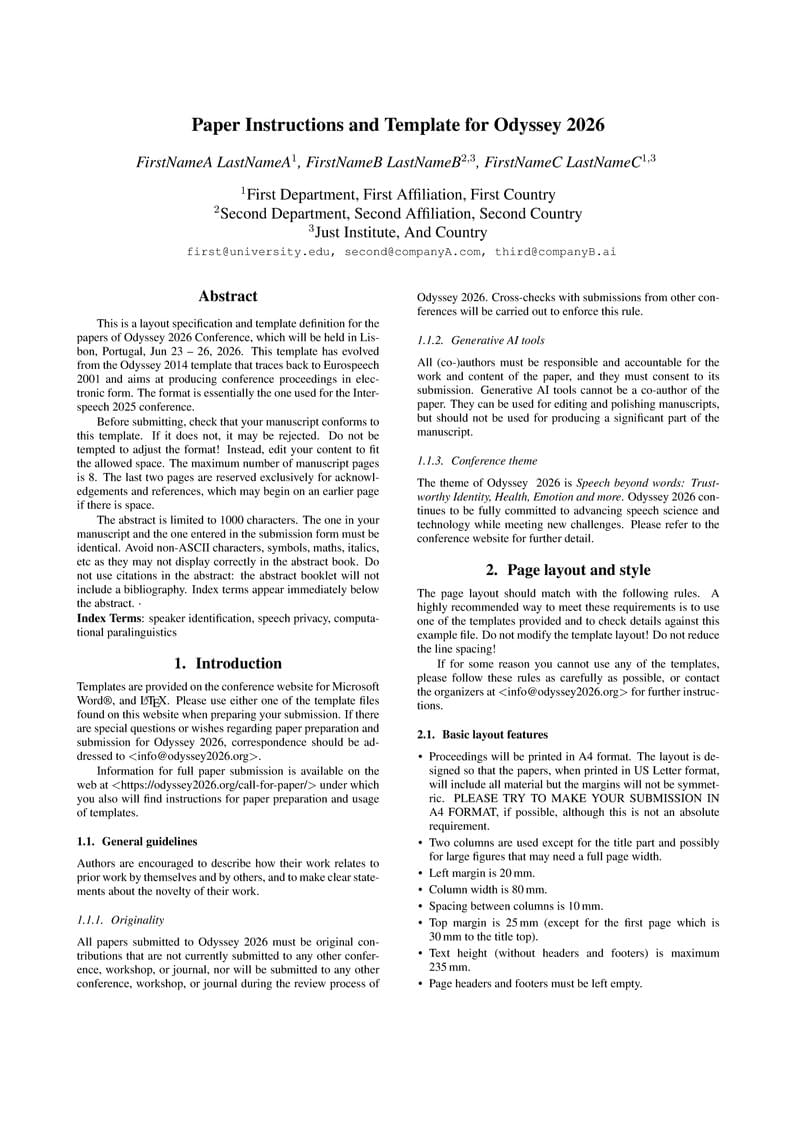
Latex template for "Odyssey 2026: The Speaker and Language Recognition Workshop" to be held in Lisbon, Portugal in Jun 23-26, 2024 Link to the conference website containing the templates and submission guidelines: https://odyssey2026.inesc-id.pt/call-for-paper/
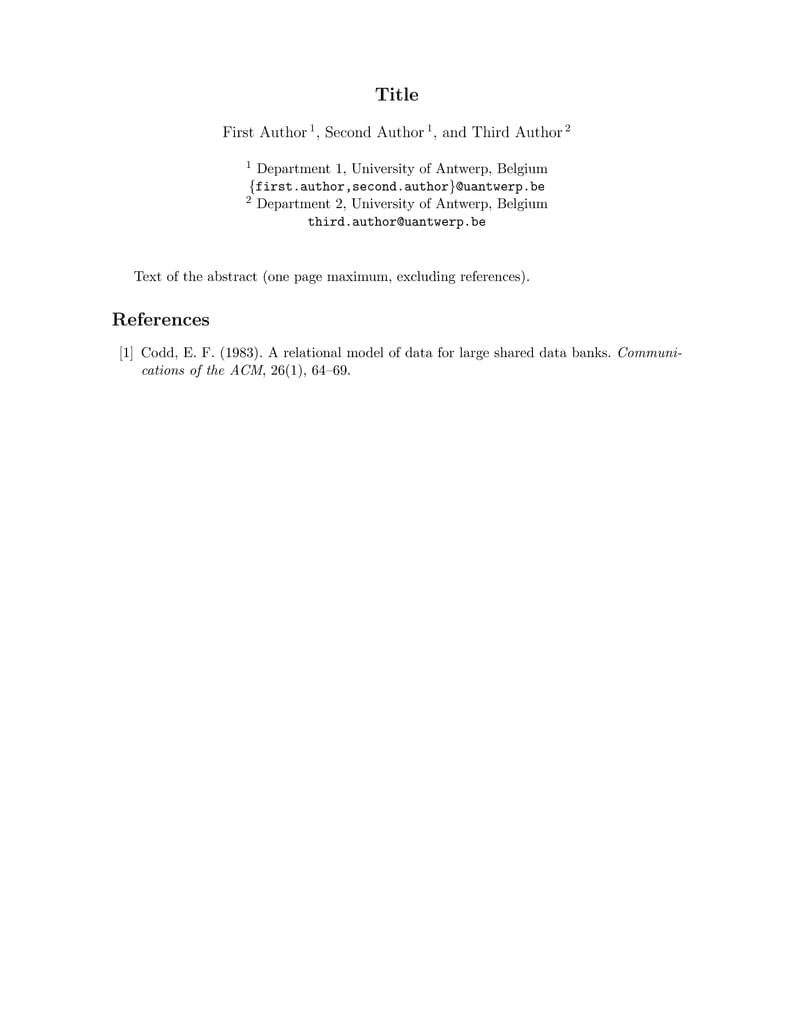
Official submission template for DBDBD 2025 https://dbdbd2025.uantwerpen.be/cfp/

In reference to guidelines provided on: https://graduateschool.camden.rutgers.edu/graduation/ Using basic structure tutorial on overleaf doc.
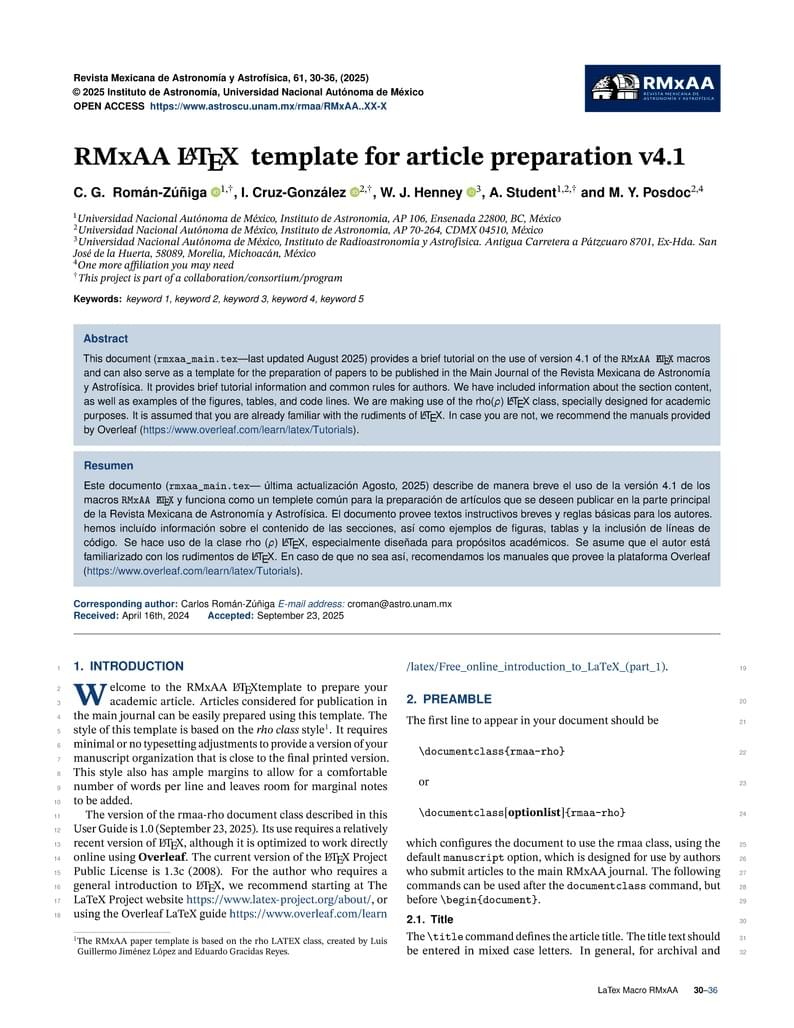
Authors are invited to submit original research papers to Revista Mexicana de Astronomía y Astrofísica Main journal (RMxAA) and conference proceedings to the conference series extension (Serie de Conferencias, RMxAC). This package contains our most recent LaTeX templates, which contain a brief guide for authors for preparing an original research paper or a conference proceedings. The rmaa_main.tex file is provided as a default template for submission of papers to the main journal, RMxAA. The files rmac_abstract_example.tex, rmac_extended_example.tex and rmac_onepage_example.tex may be used when submitting short abstracts, proceedings or poster summaries to the Conference Series, RMxAC. Basic guidelines for manuscript submission to the RMxAA and RMxAC can be consulted in our manuscript submission page at the RMxAA web portal, at https://astronomia.unam.mx/journals/rmxaa/about/submissions The RMxAA journal template is based on the Rho Class Academic Article Template, by Guillermo Méndez and Eduardo Grácidas, also available in Overleaf.
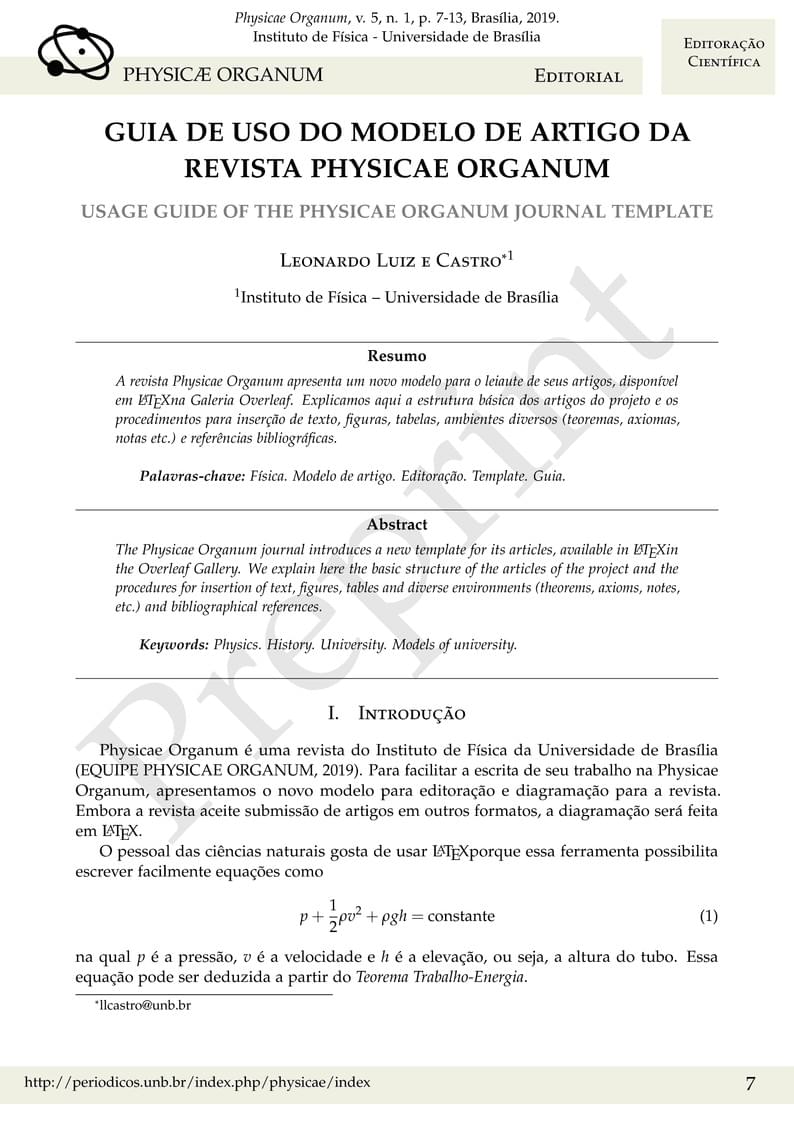
Modelo-guia para a revista Physicae Organum, do Instituto de Física da Universidade de Brasília (UnB). Template/guide for Physicae Organum, journal of the Institute of Physics of Brasilia University (UnB).
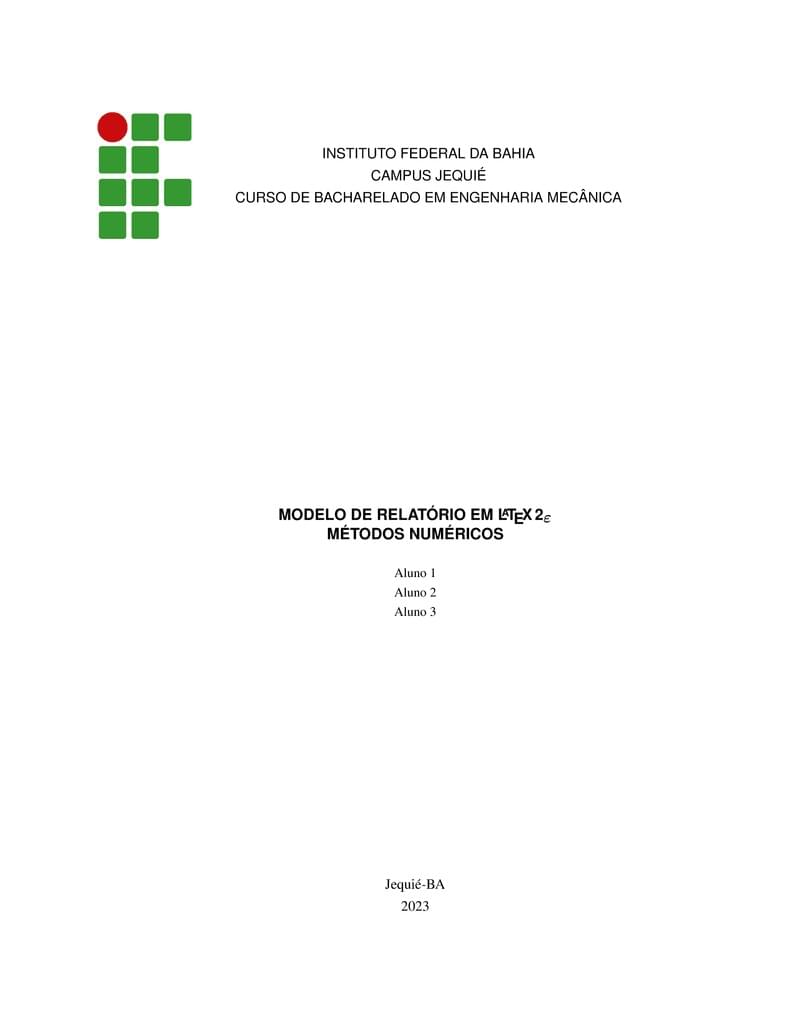
Modelo de relatório simples e prático para cursos de Ensino Médio ou graduação do Instituto Federal da Bahia (IFBA). Atualizado de acordo com as normas da ABNT 2023, oferece uma estrutura clara, organizada e profissional para a elaboração de relatórios acadêmicos.
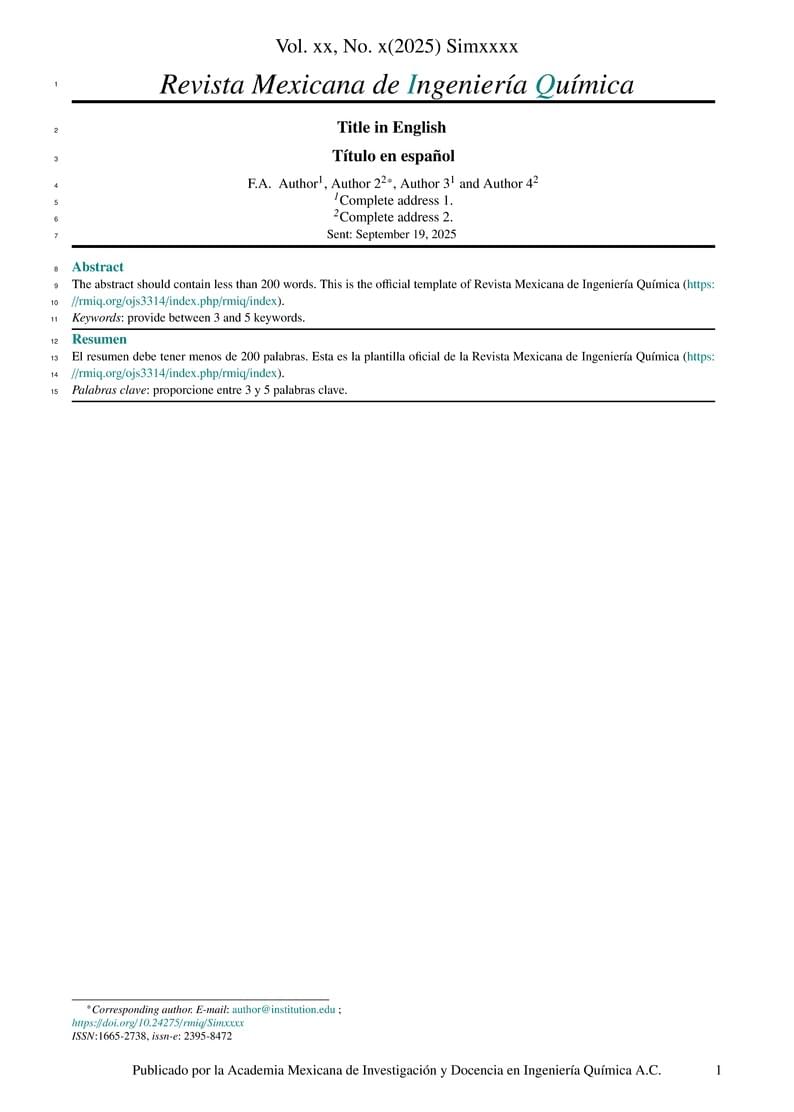
This is the official template of a scientific paper for Revista Mexicana de Ingeniería Química.
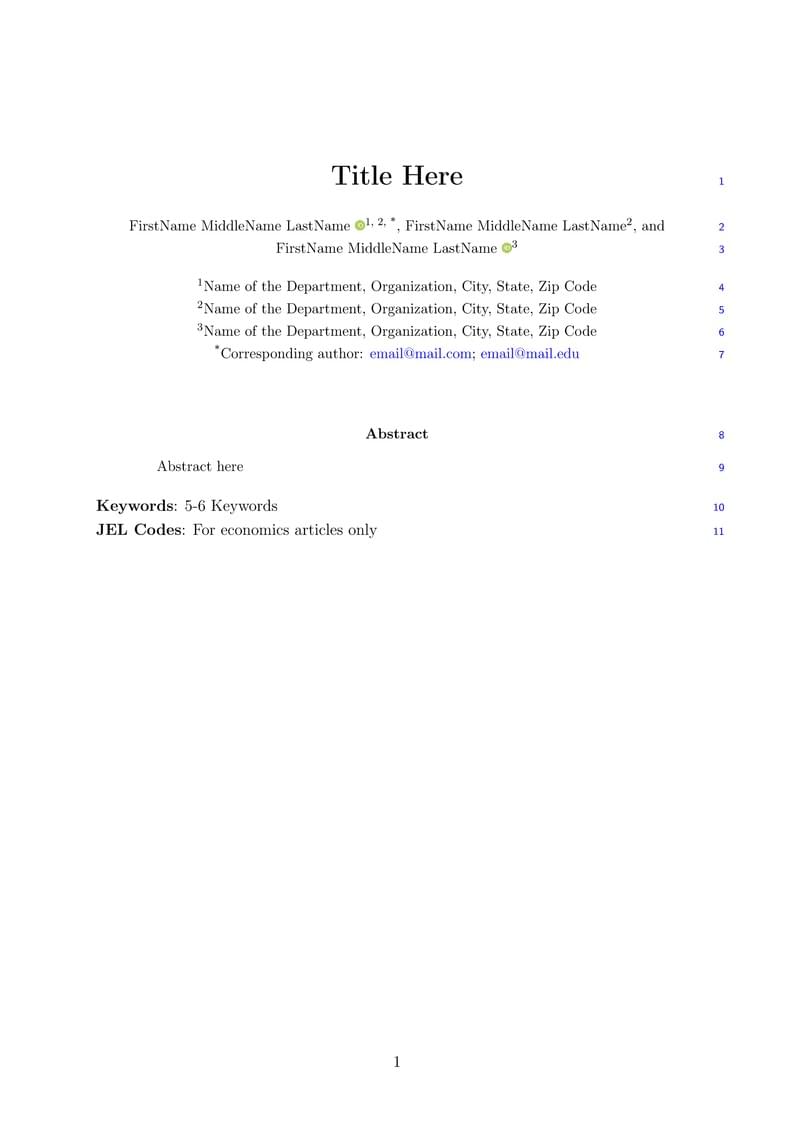
This template is a general format for writing academic manuscript. This template has everything that you need from starting to write manuscript to submitting to peer reviewed journal. I have provided all necessary latex code to write manuscript on overleaf. This template is useful for someone who does not have any prior experience with latex but interested in learning latex while writing manuscript and eventually submit manuscript to peer reviewed journal. I revised and added some new items in this version.
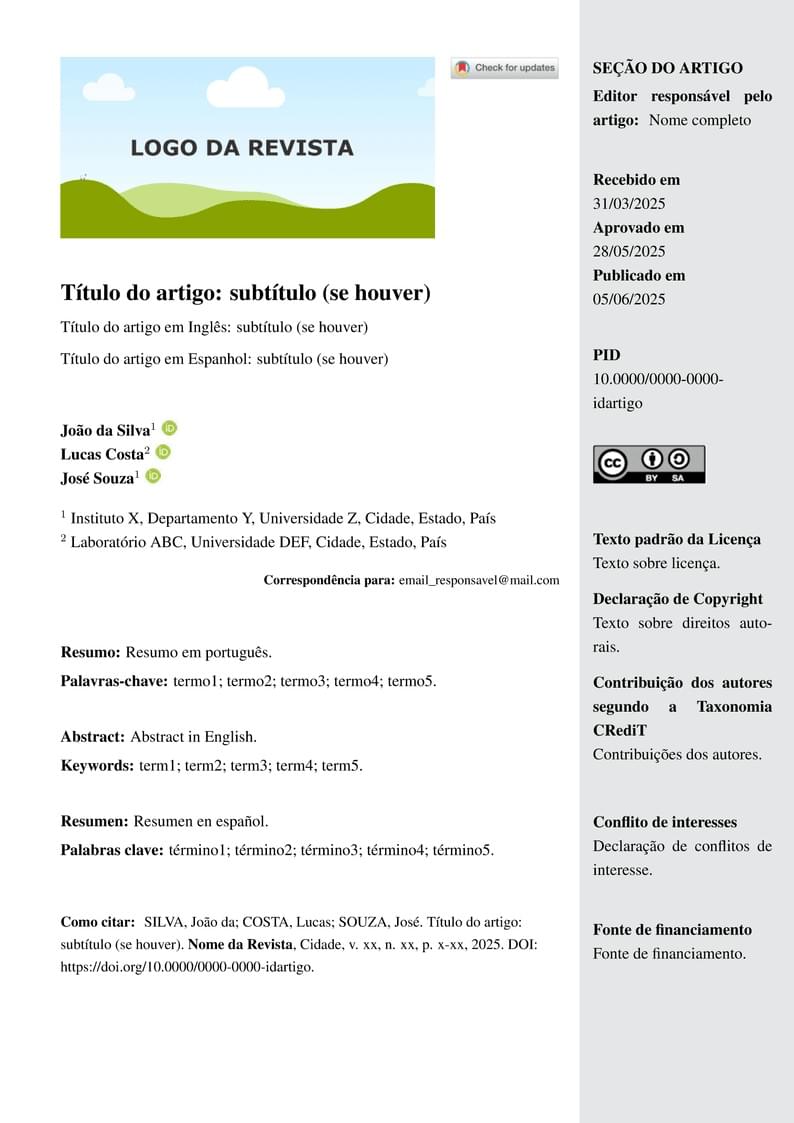
Este é um modelo LaTeX desenvolvido para atender às normas da ABNT (NBR 6022, 6023, 10520, entre outras) aplicado ao contexto de revistas acadêmicas e científicas. A iniciativa é parte de um esforço do Instituto Brasileiro de Informação em Ciência e Tecnologia (Ibict) para incentivar e facilitar o uso de LaTeX em periódicos da área de Ciência da Informação e áreas afins. O modelo oferece uma base pronta para editores e autores produzirem artigos compatíveis com as exigências formais da ABNT, mantendo qualidade tipográfica profissional e automatizando tarefas repetitivas. Mais informações, documentação e exemplos estão disponíveis em: Documentação Online | Repositório GitHub
\begin
Discover why over 20 million people worldwide trust Overleaf with their work.